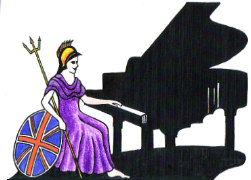Teachers, Accompanists and Piano Entertainers in the UK

UK Piano Page

Woolwich, London SE186XB
England
Want an accompanist for Musical Theatre/light music/song? Experienced accompanist/rehearsal pianist/repetiteur/MD available.
Bexley, London DA1
England
Piano Moving services in the London borough of
Haringey, London N15
England
We provide piano relocation ,piano moving and
Kensington, London SW5
England
Kensington Piano removals and disposals operating
Camden Town, London WC1
England
Westminster,Central London piano moving and
City of London, London SE13
England
Lewisham Piano Removals, Provide piano moving and
Music Festival for performers and guests Our 10th
18-06-2022 12:30PM
The Morecambe Bay Piano Group was set up to extend
11-12-2021 01:00PM
The Morecambe Bay Piano Group was set up to extend
08-01-2022 01:00PM
The Morecambe Bay Piano Group was set up to extend
12-02-2022 01:00PM